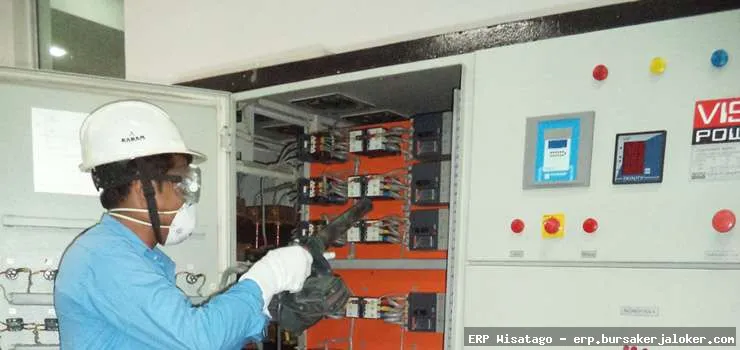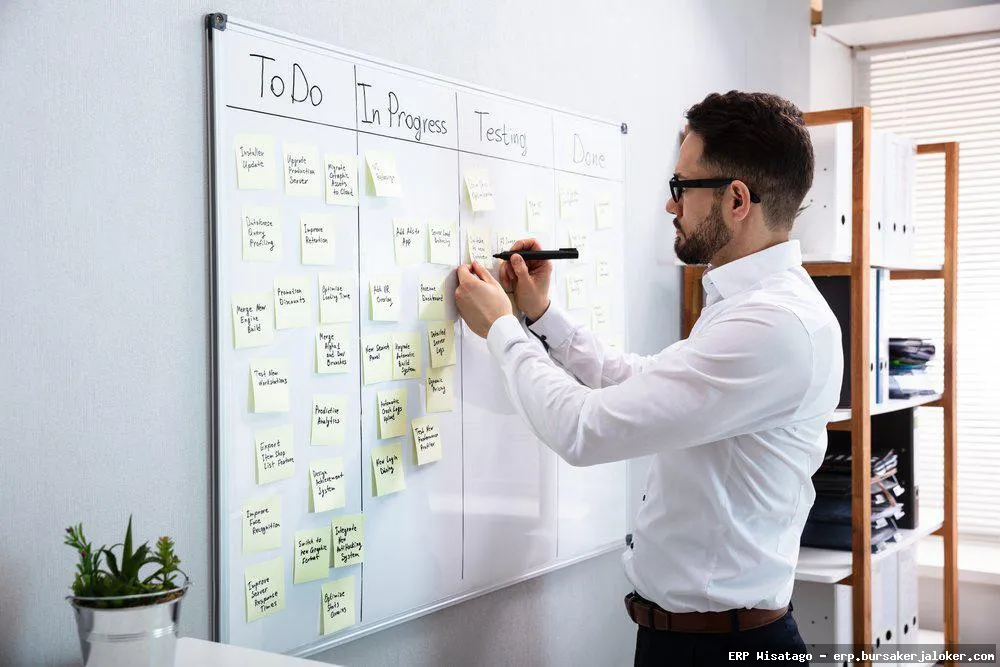The utilities industry, encompassing electricity, gas, water, and waste management, faces a unique set of challenges. From managing complex infrastructure networks to complying with stringent regulations and ensuring reliable service delivery, the pressure to operate efficiently and effectively is immense. Traditional methods of managing these multifaceted operations often fall short, leading to data silos, inefficient processes, and increased operational costs. This is where Enterprise Resource Planning (ERP) systems for utilities management come into play.
ERP systems offer a comprehensive solution by integrating various aspects of a utility’s operations, from asset management and customer billing to financial accounting and human resources. This integrated approach provides a centralized platform for managing data, streamlining processes, and improving decision-making. Think of it as replacing a patchwork of disconnected systems with a single, unified operating system for your entire utility. The potential benefits are substantial, including improved operational efficiency, reduced costs, enhanced customer service, and better regulatory compliance.

However, implementing an ERP system is not a decision to be taken lightly. It’s a significant investment that requires careful planning, execution, and ongoing maintenance. This guide will delve into the intricacies of ERP for utilities management, exploring its key features, benefits, implementation challenges, and best practices for selecting the right solution. We’ll draw on real-world examples and lessons learned to provide a practical and insightful overview of how ERP can transform the way utilities operate.
What is ERP for Utilities Management?
ERP for utilities management is a specialized software solution designed to integrate and automate core business processes within the utilities sector. It’s more than just accounting software; it’s a comprehensive platform that connects various departments and functions, providing a real-time view of the entire organization. Unlike generic ERP systems, utility-specific ERP solutions are tailored to address the unique challenges and requirements of the industry, such as asset-intensive operations, stringent regulatory compliance, and complex billing structures.
Key Differences from Generic ERP
While generic ERP systems can handle basic accounting and inventory management, they often lack the specialized functionality required by utilities. Utility-specific ERP systems offer features like:
- Asset Management: Tracking and managing physical assets like pipelines, power lines, and treatment plants.
- Work Order Management: Scheduling and tracking maintenance and repair activities.
- Outage Management: Responding to and resolving service outages quickly and efficiently.
- Geographic Information System (GIS) Integration: Integrating spatial data with operational data for better asset visibility and management.
- Regulatory Compliance: Ensuring adherence to industry regulations and reporting requirements.
- Customer Information System (CIS) Integration: Seamless integration with customer billing and account management systems.
Core Modules and Functionality
A typical ERP system for utilities management includes the following core modules:
- Financial Management: General ledger, accounts payable, accounts receivable, budgeting, and forecasting.
- Asset Management: Asset tracking, maintenance scheduling, work order management, and asset lifecycle management.
- Supply Chain Management: Procurement, inventory management, and vendor management.
- Human Resources Management: Payroll, benefits administration, and employee management.
- Customer Relationship Management (CRM): Customer service, billing, and account management.
- Business Intelligence (BI): Reporting and analytics for data-driven decision-making.
Benefits of Implementing ERP in Utilities
Implementing an ERP system can bring significant benefits to utilities organizations. Here are some of the most compelling advantages:
Improved Operational Efficiency
ERP systems streamline processes by automating manual tasks, eliminating data silos, and providing a unified view of operations. This leads to increased efficiency in areas such as asset maintenance, work order management, and customer service. For example, automated work order scheduling can reduce downtime and improve asset utilization.
Reduced Costs
By optimizing resource allocation, improving inventory management, and reducing administrative overhead, ERP systems can help utilities reduce costs. For instance, better inventory control can minimize waste and prevent stockouts, while streamlined procurement processes can lower purchasing costs.
Enhanced Customer Service
ERP systems enable utilities to provide better customer service by providing a 360-degree view of customer interactions, improving response times, and offering self-service portals. Integrated billing and account management systems can also reduce billing errors and improve customer satisfaction.
Better Regulatory Compliance
Utilities are subject to stringent regulations, and ERP systems can help them comply with these requirements by providing robust audit trails, automated reporting, and real-time monitoring. This reduces the risk of penalties and ensures adherence to industry standards.
Data-Driven Decision Making
ERP systems provide access to real-time data and analytics, enabling utilities to make informed decisions based on accurate and timely information. This can lead to better resource allocation, improved operational performance, and enhanced strategic planning.
Challenges of ERP Implementation in Utilities
While the benefits of ERP are substantial, implementing an ERP system in a utility organization is a complex undertaking. Here are some of the common challenges:
High Implementation Costs
ERP implementations can be expensive, requiring significant investments in software, hardware, consulting services, and training. It’s crucial to carefully evaluate the total cost of ownership (TCO) and develop a realistic budget.
Complex Integration
Integrating an ERP system with existing systems, such as CIS and GIS, can be challenging. Data migration and system integration require careful planning and execution to ensure data accuracy and consistency.
Resistance to Change
ERP implementations often require significant changes to business processes, which can lead to resistance from employees. Effective change management is essential to ensure user adoption and maximize the benefits of the system. In my experience, involving key stakeholders early in the process and providing comprehensive training are crucial for overcoming resistance.
Lack of Expertise
Implementing and maintaining an ERP system requires specialized expertise. Utilities may need to hire consultants or train existing staff to develop the necessary skills. Choosing an ERP vendor with proven experience in the utilities sector is also critical.
Data Security Concerns
ERP systems contain sensitive data, making them a target for cyberattacks. Utilities must implement robust security measures to protect their data and prevent unauthorized access. This includes data encryption, access controls, and regular security audits.

Choosing the Right ERP Solution for Your Utility
Selecting the right ERP solution is crucial for a successful implementation. Here are some key factors to consider:
Assess Your Needs
Before evaluating ERP vendors, take the time to thoroughly assess your organization’s needs and requirements. Identify your pain points, define your goals, and document your existing processes. This will help you determine the specific features and functionality you need in an ERP system. A detailed requirements document is invaluable during the vendor selection process.
Evaluate Vendors
Research and evaluate different ERP vendors to find a solution that meets your specific needs. Consider factors such as the vendor’s experience in the utilities sector, the system’s functionality, its scalability, and its integration capabilities. Request demos and speak to other utilities that have implemented the system. Don’t be afraid to ask tough questions and challenge the vendor’s claims.
Consider Cloud vs. On-Premise
Decide whether you want a cloud-based or on-premise ERP system. Cloud-based solutions offer advantages such as lower upfront costs, easier maintenance, and greater scalability. On-premise solutions offer greater control over data and security. Weigh the pros and cons of each option carefully before making a decision. Many utilities are now opting for a hybrid approach, combining cloud and on-premise solutions to leverage the benefits of both.
Check for Integration Capabilities
Ensure that the ERP system can integrate seamlessly with your existing systems, such as CIS and GIS. Integration is crucial for data accuracy and consistency. Ask the vendor about their integration capabilities and request references from other customers who have integrated the system with similar applications.
Consider Long-Term Costs
Evaluate the total cost of ownership (TCO) of the ERP system, including software licenses, implementation services, maintenance fees, and training costs. Don’t just focus on the upfront costs; consider the long-term costs as well. A seemingly cheaper solution may end up being more expensive in the long run due to hidden costs or limited functionality. Effective IT management necessitates a comprehensive approach, and RMM plays a crucial role in that strategy
.
Best Practices for ERP Implementation in Utilities
To ensure a successful ERP implementation, follow these best practices:
Develop a Comprehensive Implementation Plan
Create a detailed implementation plan that outlines the project scope, timeline, budget, and resources. Assign clear roles and responsibilities to team members. A well-defined plan is essential for keeping the project on track and within budget.
Secure Executive Sponsorship
Obtain strong support from executive leadership. Executive sponsorship is crucial for securing the necessary resources and driving user adoption. Leaders need to champion the project and communicate its importance to the organization.
Involve Stakeholders Early
Involve key stakeholders from all departments in the implementation process. This will help ensure that the system meets their needs and that they are committed to using it. Gather feedback and address concerns early on to avoid resistance to change.
Provide Comprehensive Training
Provide comprehensive training to all users on how to use the ERP system. Training should be tailored to the specific roles and responsibilities of each user. Ongoing training and support are essential for ensuring user adoption and maximizing the benefits of the system. I’ve seen projects fail because users weren’t properly trained and simply reverted to their old ways.
Monitor and Evaluate Progress
Regularly monitor and evaluate the progress of the implementation. Track key performance indicators (KPIs) to measure the success of the project. Identify and address any issues or risks that arise. Continuous monitoring and evaluation are essential for ensuring that the project stays on track and delivers the expected benefits.
The Future of ERP in Utilities
The future of ERP in utilities is likely to be shaped by several key trends:
Cloud Computing
Cloud-based ERP solutions are becoming increasingly popular, offering greater scalability, flexibility, and cost savings. As cloud technology matures, more utilities are likely to adopt cloud-based ERP systems.
Artificial Intelligence (AI) and Machine Learning (ML)
AI and ML are being integrated into ERP systems to automate tasks, improve decision-making, and enhance predictive maintenance. For example, AI can be used to predict equipment failures and optimize maintenance schedules.
Internet of Things (IoT)
The IoT is generating vast amounts of data from sensors and devices in the field. ERP systems are being integrated with IoT platforms to capture and analyze this data, providing real-time insights into asset performance and operational efficiency.

Mobile Technology
Mobile devices are becoming increasingly important for field workers. ERP systems are being designed with mobile capabilities to enable workers to access information, update work orders, and communicate with the office from anywhere.
In conclusion, ERP systems offer a powerful solution for utilities organizations seeking to improve operational efficiency, reduce costs, enhance customer service, and ensure regulatory compliance. By carefully planning the implementation, selecting the right solution, and following best practices, utilities can unlock the full potential of ERP and transform their operations for the future.
Frequently Asked Questions (FAQ) about ERP for utilities management
What are the key benefits of implementing an ERP system for managing a water utility company?
Implementing an ERP system for a water utility company offers significant advantages. It streamlines operations by integrating various functions like billing, customer service, asset management, and financial accounting. This integration leads to improved efficiency, reduced operational costs, and enhanced decision-making. Specifically, ERP systems improve billing accuracy, reduce revenue leakage, and facilitate better customer communication. Furthermore, they provide real-time data on water usage, leakage detection, and infrastructure health, enabling proactive maintenance and preventing costly breakdowns. By centralizing data and automating processes, water utilities can optimize resource allocation, comply with regulatory requirements, and ultimately deliver better service to their customers. Improved reporting is also a key benefit, allowing for better analysis of performance and identification of areas for improvement.
How can an ERP system help with regulatory compliance and reporting in the energy utilities sector?
ERP systems play a crucial role in simplifying regulatory compliance and reporting for energy utilities. These systems provide a centralized platform for tracking and managing data related to environmental regulations, safety standards, and financial reporting requirements. An ERP can automate the collection, storage, and analysis of data needed for regulatory reports, reducing the risk of errors and non-compliance penalties. They also offer audit trails, providing a clear record of all transactions and activities, which is essential for demonstrating compliance to regulatory bodies. Furthermore, many ERP systems include built-in compliance modules that are specifically designed to meet the unique needs of the energy utilities sector, ensuring that organizations stay up-to-date with the latest regulations and reporting requirements. This proactive approach minimizes risk and enhances transparency.
What are the common challenges faced during ERP implementation in a gas utilities company, and how can they be mitigated?
Implementing an ERP system in a gas utilities company presents several challenges. One common issue is resistance to change from employees accustomed to legacy systems. This can be mitigated through comprehensive training programs and clear communication highlighting the benefits of the new system. Data migration is another significant challenge; ensuring accurate and complete transfer of data from old systems to the ERP requires careful planning and data cleansing. Poorly defined business processes can also hinder implementation; it’s crucial to analyze and optimize processes before configuring the ERP. Furthermore, inadequate project management and a lack of executive sponsorship can derail the project. Establishing a strong project team, securing executive buy-in, and utilizing a phased implementation approach are critical for success. Finally, choosing the right ERP vendor and ensuring their expertise in the gas utilities sector is vital.
